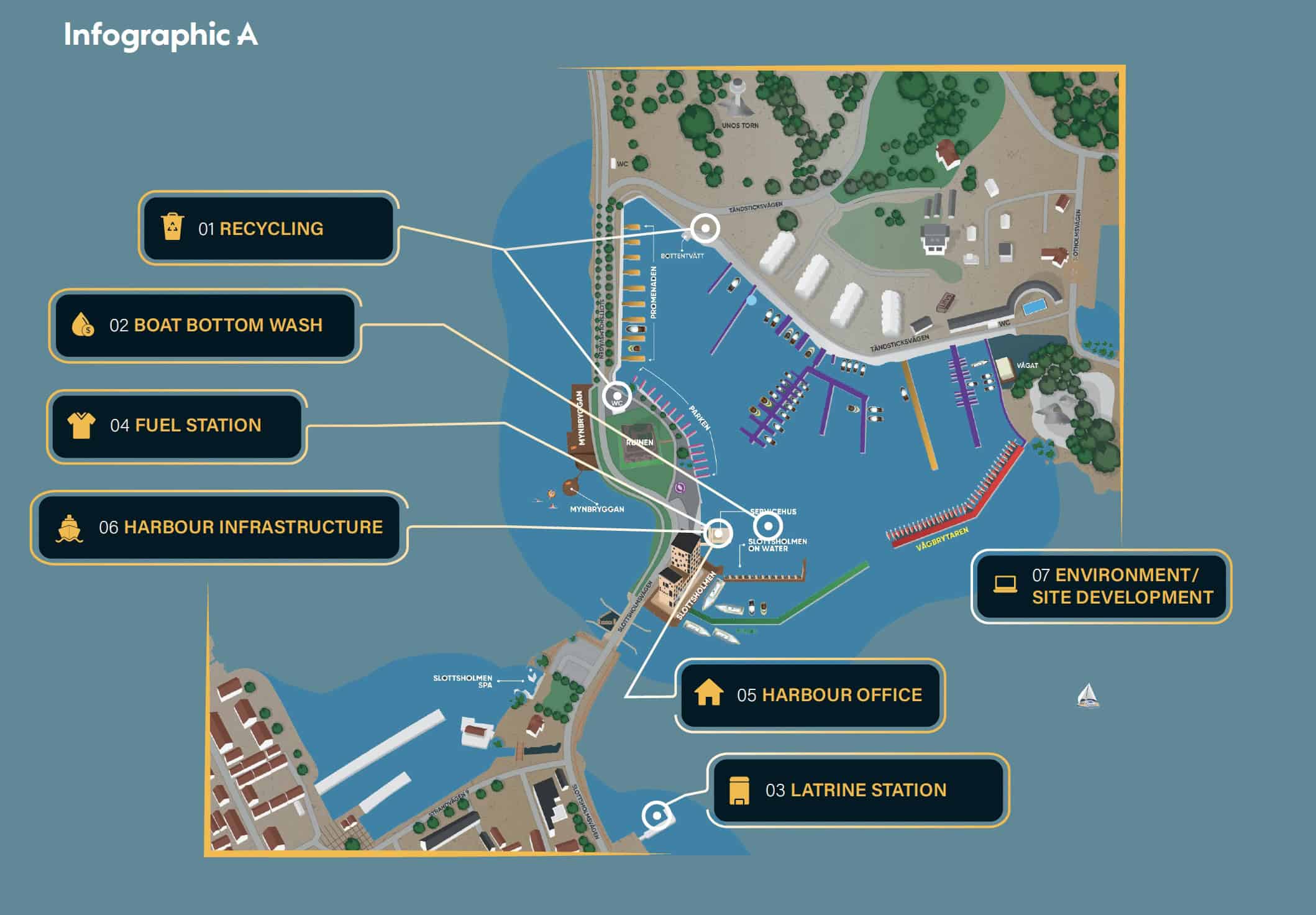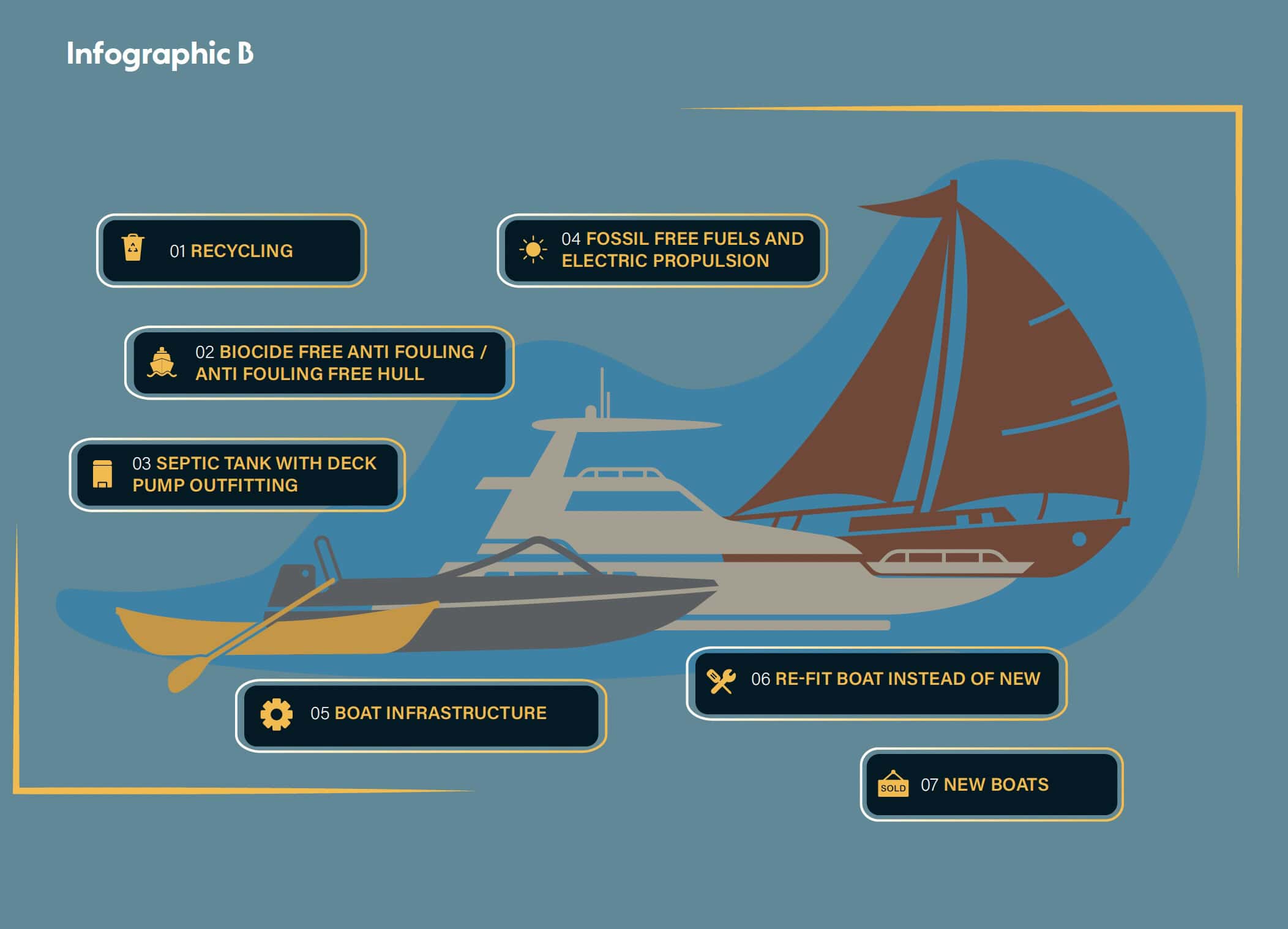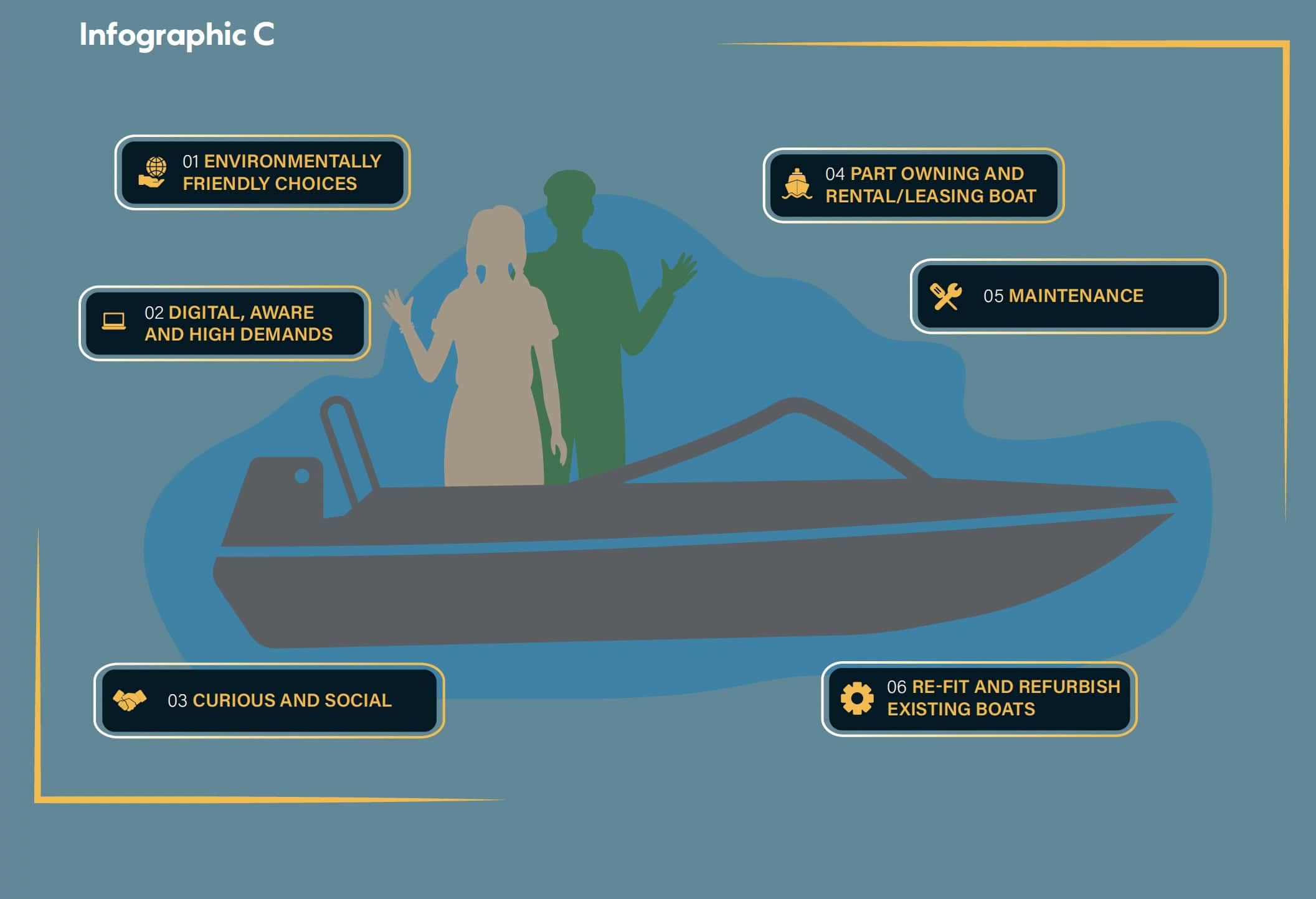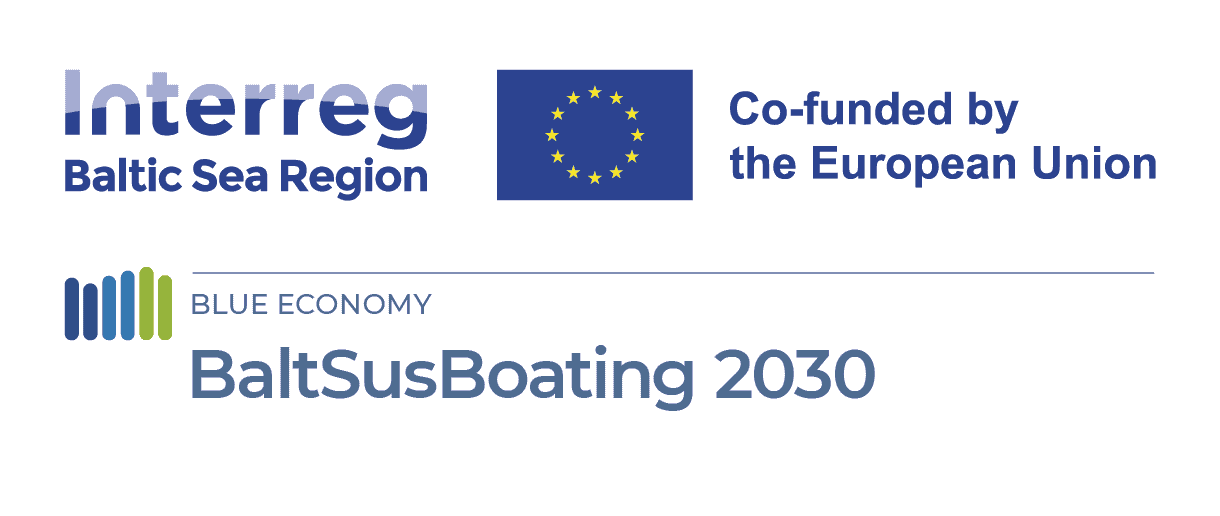
Sustainable boating in the Baltic Sea Region. What does it mean and how to promote it?
10 September 2024
Boating in the Baltic Sea Region can become more and more sustainable.
While the region can be proud of being in the forefront of some aspects of sustainability, there are others that still need and can be improved.
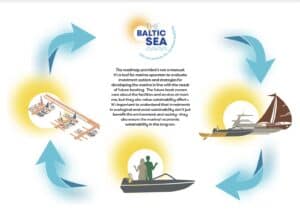
One of the core activities of the #BSB2030 project was to discuss the path for improvement and prepare the Sustainability Roadmap for boating in the Baltic Sea.
In the course of the Project we proposed to look at sustianbility from three crucial perspectives:
- a marina
- a boat
- a boater
In a world where sustainability is becoming increasingly central, it is essential that the marinas of the future not only consider environmental aspects but also integrate social and economic sustainability into their operations.
By focusing on these three pillars of sustainability, we can
create marinas that are thriving and resilient, while contributing to the health of society and the planet.
Social Sustainability
To achieve social sustainability, future marinas must be inclusive and foster a sense of community and inclusivity. This involves creating safe and accessible spaces for all visitors, regardless of their background or experience. Marinas should offer educational programs and workshops on marine ecosystems and sustainable practices, thereby enhancing awareness and engagement among visitors and the local community. Additionally, marinas should create employment opportunities and support local economies by collaborating with nearby businesses and artisans.
Ecological Sustainability
Ecological sustainability is at the heart of a sustainable marina. Marinas should implement advanced waste management and recycling systems to minimize their negative impact on marine ecosystems. The use of eco-friendly materials and technologies, such as solar energy and rainwater harvesting, is essential to reduce carbon emissions and conserve natural resources. Establishing marine reserves and protected areas can help preserve biodiversity and safeguard sensitive marine habitats. Furthermore, marinas should support research initiatives and collaborate with scientific institutions to monitor and improve the health of surrounding waters.
Economic Sustainability
Economic sustainability involves ensuring that the marina is economically viable and capable of continuing to operate and grow in the long term. This can be achieved by diversifying revenue streams, such as offering various services including boat rentals, repair services, and eco-tourism activities. Investing in sustainable technology may have high initial costs, but it leads to long-term savings through reduced operatio-
nal costs and increased efficiency. Marketing the marina as a sustainable destination can also attract a new generation of environmentally conscious boating enthusiasts and tourists, creating additional economic opportunities.
The sustainable marina of the future is a place where social, ecological, and economic sustainability converge to create a thriving and resilient operation. By investing in and prioritizing these three sustainability goals, marinas can not only help protect our planet but also promote social welfare and economic success. This holistic approach ensures that our marine resources and communities can be enjoyed and flourish for generations to come.
The Suitability Roadmap will be presented during our Final Event on 25th Riga. Please check our infographics, to get inspired for the discussion:)






